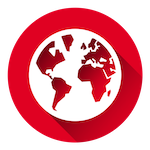Announcement of U.S. Extended Continental Shelf Outer Limits

What is the ECS? The continental shelf is the extension of a country’s land territory under the sea. The continental shelf holds many resources (e.g., corals, crabs) and vital habitats for marine life. The portion of the continental shelf beyond 200 nautical miles from the coast is known as the “extended continental shelf,” or ECS. The ECS includes the seabed and subsoil, but not the water column.
Where is the U.S. ECS? The United States has ECS in seven regions: the Arctic, Atlantic (east coast), Bering Sea, Pacific (west coast), Mariana Islands, and two areas in the Gulf of Mexico. The U.S. ECS area is approximately one million square kilometers – an area about twice the size of California. The geographic coordinates and maps of the seven U.S. ECS regions are available in the Executive Summary posted on the U.S. ECS website at state.gov/shelf.
Why determine the ECS limits? The United States, like other countries, has an inherent interest in knowing, and declaring to others, the extent of its ECS and thus where it is entitled to exercise sovereign rights. Defining our ECS outer limits in geographical terms provides the specificity and certainty necessary to allow the United States to conserve and manage the resources of the ECS.
What are U.S. rights in the ECS? Like other countries, the United States has exclusive rights to conserve and manage the living and non-living resources of its ECS.The United States also has jurisdiction over marine scientific research relating to the ECS, as well as other authorities provided for under customary international law, as reflected in the 1982 UN Convention on the Law of the Sea.
What’s down there? Much of the ocean – especially the deep ocean – remains unexplored. Continued mapping and exploration of the ECS will be important to gaining a better understanding of its habitats, ecosystems, biodiversity, and resources.
How are ECS limits determined? The continental shelf is defined in the 1982 UN Convention on the Law of the Sea, and the ECS outer limits are determined using the complex rules found in Article 76. Applying these rules requires knowledge of the geophysical and geological characteristics of the seabed and subsoil.
What information is needed to determine ECS outer limits? Two primary datasets are needed to determine the outer limits of the ECS. The first is bathymetric data, which provide a three-dimensional map of the surface of the seafloor. The second is seismic data, which provide information on the depth, thickness, and other characteristics of the sediments beneath the seafloor. Geological samples and other geophysical techniques, where available, are used to augment these primary data types. U.S. data collection began in 2003 and constitutes the largest offshore mapping effort ever conducted by the United States.
Who did the work? The ECS Task Force, an interagency body of the U.S. Government, coordinated the delineation of the outer limits of the U.S. ECS. The Department of State chairs the Task Force, leads the ECS Project Office, and manages the project’s diplomatic and legal aspects. The U.S. Geological Survey (USGS) leads the effort to collect, process, and interpret the seismic and geologic data. The National Oceanic and Atmospheric Administration (NOAA) leads the effort to collect, process, and analyze the bathymetric data. Many other Federal and academic partners collaborated to complete the work over the course of more than 20 years.
Is the United States extending its exclusive economic zone (EEZ)? No. The ECS is not an extension of the EEZ. The continental shelf includes only the seabed and subsoil, whereas the EEZ also includes the water column. In addition, while the maximum extent of the EEZ is 200 nautical miles from the coast, the continental shelf may extend beyond 200 nautical miles. Some of the rights that a country has in its EEZ, especially sovereign rights over water column resources (such as fish), do not apply to the ECS.
Does the U.S. ECS overlap with the ECS areas of any neighboring countries? Yes. The U.S. ECS partially overlaps with ECS areas of Canada, The Bahamas, and Japan. In these areas, the United States and its neighbors will need to establish maritime boundaries in the future. In other areas, the United States has already established ECS boundaries with its neighbors, including with Cuba, Mexico, and Russia.
Does the Administration still support joining the Law of the Sea Convention? Yes. Like past Administrations, both Republican and Democratic, this Administration supports the United States joining the 1982 UN Convention on the Law of the Sea. The announcement of the U.S. ECS limits in no way changes the Administration’s position toward the Convention.
- U.S. ECS areas – Map showing the seven U.S. ECS regions
- Maritime zones – Diagram showing maritime zones under the international law of the sea, including the extended continental shelf
Official news published at https://www.state.gov/announcement-of-u-s-extended-continental-shelf-outer-limits-2/


